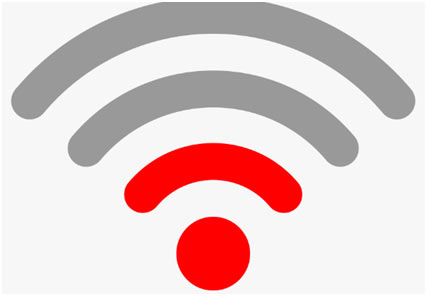WiFi and Weak signal problems
Most Individuals are aware of the wireless icon Symbol on a pc or smartphone which suggests a successful wireless LAN connection, but fewer know the origins of this technology that’s been dubbed as Wi-Fi.
Interestingly, the term Wi-Fi initially did Not signify the technology itself, but instead was a branding term invented to promote and support interoperability between different wireless LAN systems. Wi-Fi wasn’t a shortened version of wireless fidelity; it had been a pun on the term hi-fi (high fidelity), an homage to high quality audio technologies.
The Expression Wi-Fi was created by the Wireless Ethernet Compatibility Alliance, which afterward became the Wi-Fi Alliance. In April 2000, the team announced the first set of Wi-Fi Accredited products, beginning Using IEEE 802.11b products. Now over 20 years after, you will find more than 15 billion Wi-Fi products being used across the world, according to the alliance.
What is WiFi?
In an overall sense, Wi-Fi describes the wireless LAN technology that uses the IEEE 802.11 standards for communications. Wi-Fi products use radio waves to transmit information out of a client device to an entry point, which comprises a router, along with the router finishes a connection to other devices on the LAN, WAN, or the internet.
Originally the tech utilized the 2.4 GHz frequency but has since expanded to 5 GHz, 60 GHz, and shortly 6 GHz frequency bands. (A rival standard, called HomeRF, additionally affirmed wireless links, but sellers and clients finally chose Wi-Fi along with the 802.11 protocols as the wireless standard.)

Weak WiFi Signals
Wi-Fi enables you to construct a network without the hassle of running cable, but these networks are highly determined by signal strength. A feeble Wi-Fi signal can lower your available bandwidth and also lead to connection issues. Tracking down and fixing problems which may be attenuating your wireless signal enhance your network’s speed and reliability.

The following are some WiFi issues with their solutions:
Distance
Among the most typical causes of a low Wi-Fi signal is distance. Wireless routers and access points are confined to low-power broadcasts to stop interference with other equipment, restricting their successful range to approximately 100 feet indoors.
Solution:
Newer 802.11n Wi-Fi products can increase that range marginally, but should you want a trusted network on a large area, your very best choice is to utilize extra wireless routers or repeaters to improve your coverage. The nearer you are to a receiver, the stronger the signal will be.
Construction
If your Wi-Fi signal strangely falls off in some rooms, it might be due to your house’s structure. Especially thick walls may muffle Wi-Fi signals, as can certain kinds of construction materials. In some older houses which include plaster and lath walls, a metallic net within the wall efficiently disrupts any Wi-Fi signal passing through, substantially reducing signal power or obstructing the signal entirely.
Solution:
Transferring your routers and repeaters in your house can assist you in finding any troublesome construction, and enable you to put your equipment in configurations to prevent signal interference.
Other Wi-Fi Networks
Another source of Wi-Fi signal issue is interference. Wireless devices comprise the capacity to transmit and receive on many different stations, but oftentimes, they change in the factory set to one default station. This may indicate that many wireless resources in a small place, including an apartment building, are competing for signal at precisely the same frequency band.
Solution:
In the event you experience unexpectedly weak Wi-Fi signals and discover different networks working in your immediate area, consider switching to different stations to obtain a less crowded region of the spectrum.
Device Interference
You may also find Irregular signal Issues brought on by interference from non–Wi-Fi devices. Wi-Fi functions from the 2.4-gigahertz band, as do cordless telephones and a few distant alarm products. Once active, these devices can lower your Wi-Fi signal power because of interference. Furthermore, microwaves can create significant disturbance in the frequency range used by wireless devices and may totally disrupt a Wi-Fi connection.
Solution:
Taking good care to all of your own wireless nodes and gear from these interferences might help improve signal power, but replicated problems could require that you replace old appliances with modern, wireless-friendly options or switch into the 5-gigahertz frequency band accessible with 802.11n products.
